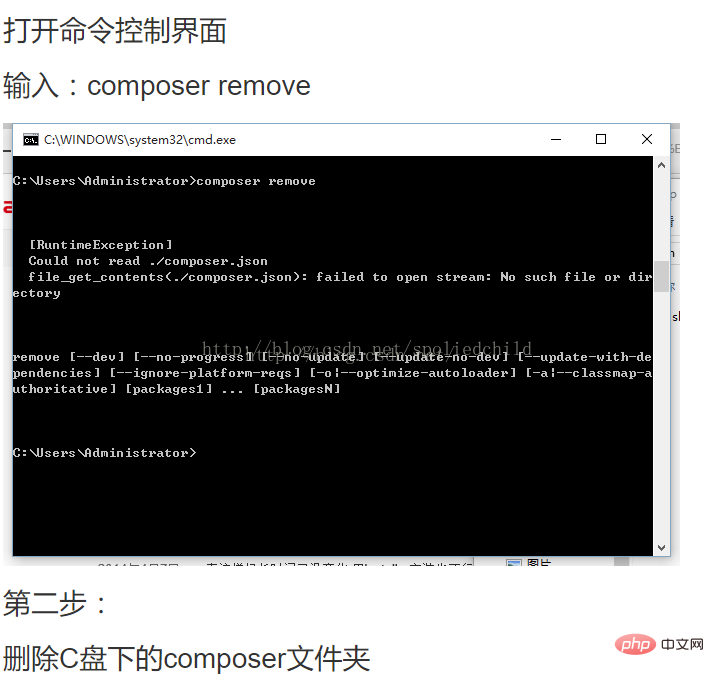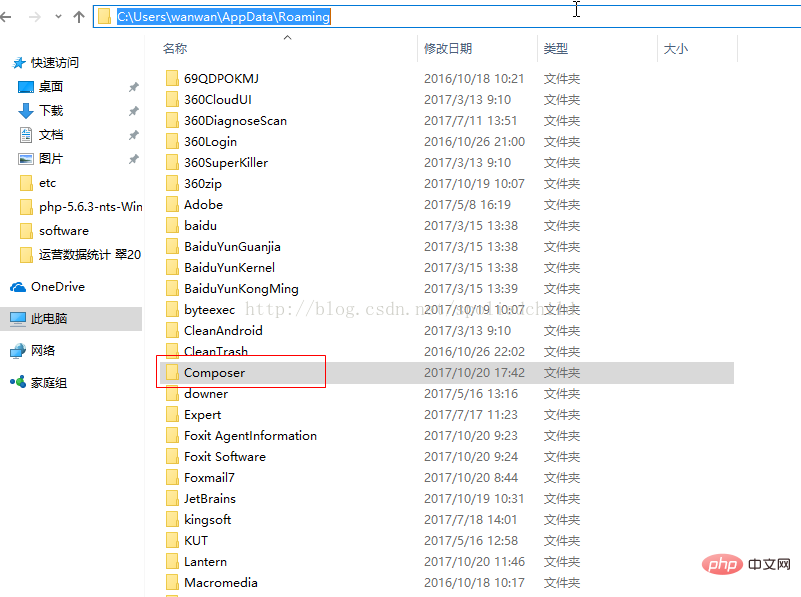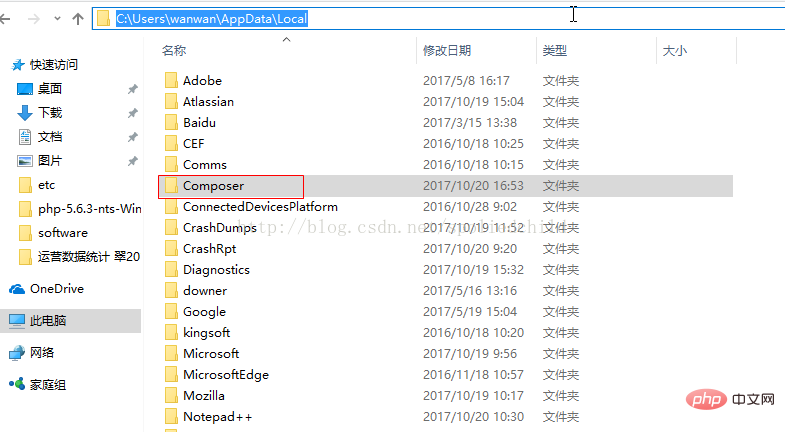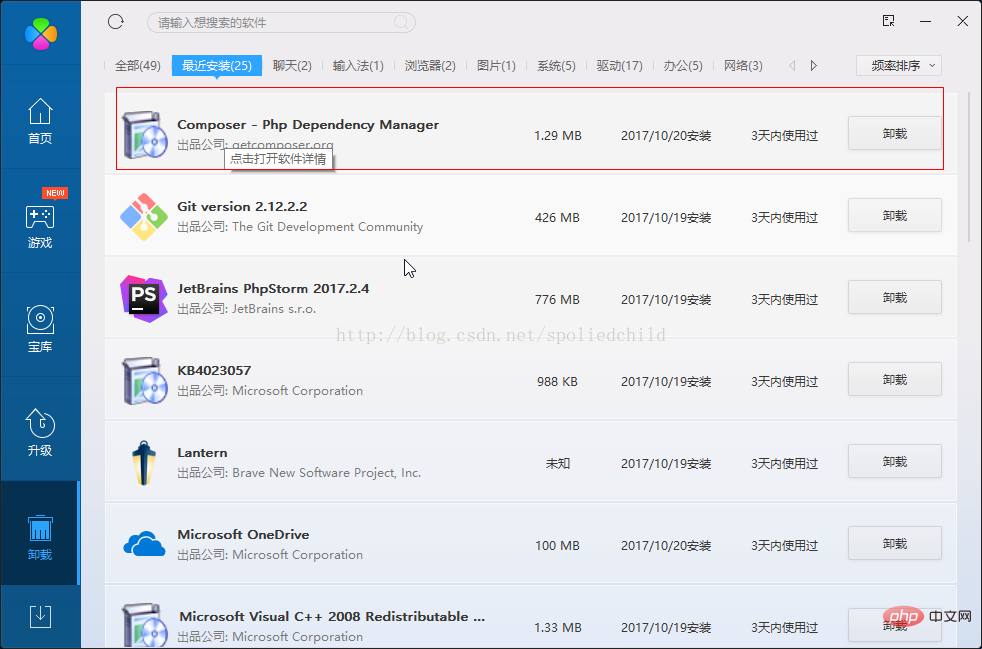How to uninstall Composer
The tutorial column of composer below will introduce to you how to uninstall Composer. I hope it will be helpful to friends who need it!

uninstall



[Remarks]: If it is installed through the composer-setup.exe method, go directly to the program function to find and uninstall it. Can

The above is the detailed content of How to uninstall Composer. For more information, please follow other related articles on the PHP Chinese website!

Hot AI Tools

Undresser.AI Undress
AI-powered app for creating realistic nude photos

AI Clothes Remover
Online AI tool for removing clothes from photos.

Undress AI Tool
Undress images for free

Clothoff.io
AI clothes remover

AI Hentai Generator
Generate AI Hentai for free.

Hot Article

Hot Tools

Notepad++7.3.1
Easy-to-use and free code editor

SublimeText3 Chinese version
Chinese version, very easy to use

Zend Studio 13.0.1
Powerful PHP integrated development environment

Dreamweaver CS6
Visual web development tools

SublimeText3 Mac version
God-level code editing software (SublimeText3)

Hot Topics
 1378
1378
 52
52
 What is a composer used for?
Apr 06, 2025 am 12:02 AM
What is a composer used for?
Apr 06, 2025 am 12:02 AM
Composer is a dependency management tool for PHP. The core steps of using Composer include: 1) Declare dependencies in composer.json, such as "stripe/stripe-php":"^7.0"; 2) Run composerinstall to download and configure dependencies; 3) Manage versions and autoloads through composer.lock and autoload.php. Composer simplifies dependency management and improves project efficiency and maintainability.
 What is the difference between composer and orchestrator?
Apr 02, 2025 pm 02:49 PM
What is the difference between composer and orchestrator?
Apr 02, 2025 pm 02:49 PM
Composer is used to manage dependencies on PHP projects, while Orchestrator is used to manage and coordinate microservices or containerized applications. 1.Composer declares and manages dependencies of PHP projects through composer.json file. 2. Orchestrator manages the deployment and extension of services through configuration files (such as Kubernetes' YAML files), ensuring high availability and load balancing.
 What is a composer doing?
Apr 08, 2025 am 12:19 AM
What is a composer doing?
Apr 08, 2025 am 12:19 AM
Composer is a dependency management tool for PHP, used to declare, download and manage project dependencies. 1) Declare dependencies through composer.json file, 2) Install dependencies using composerinstall command, 3) parse the dependency tree and download it from Packagist, 4) generate the autoload.php file to simplify automatic loading, 5) optimize use includes using composerupdate--prefer-dist and adjusting the autoload configuration.
 What is the definition of a composer?
Apr 03, 2025 am 12:17 AM
What is the definition of a composer?
Apr 03, 2025 am 12:17 AM
Composers are people who make music, express emotions, tell stories, and convey ideas through music. The composer's work includes: 1. Concept: determine the theme and style of the work; 2. Creation: compose melody and harmony to form a preliminary musical structure; 3. Experiment: audition and adjustment of the work through instruments or software; 4. Improvement: modify and improve according to the audition results until you are satisfied.
 Composer Expertise: What Makes Someone Skilled
Apr 11, 2025 pm 12:41 PM
Composer Expertise: What Makes Someone Skilled
Apr 11, 2025 pm 12:41 PM
To become proficient when using Composer, you need to master the following skills: 1. Proficient in using composer.json and composer.lock files, 2. Understand how Composer works, 3. Master Composer's command line tools, 4. Understand basic and advanced usage, 5. Familiar with common errors and debugging techniques, 6. Optimize usage and follow best practices.
 What is composer in Android?
Apr 04, 2025 am 12:18 AM
What is composer in Android?
Apr 04, 2025 am 12:18 AM
Composer is part of the SurfaceFlinger service in Android, and is responsible for synthesising multiple graphics layers into the final display buffer. 1) Collect the graphics layer, 2) sort the graphics layer, 3) synthesize the graphics layer, 4) output to the display device to improve application performance and user experience.
 What is App composer?
Apr 07, 2025 am 12:07 AM
What is App composer?
Apr 07, 2025 am 12:07 AM
AppComposer is a tool for building and managing applications. 1) It simplifies application development and improves efficiency by dragging and configuring predefined components. 2) Developers can define components, combine interfaces, define business logic, and ultimately render the application. 3) Support basic and advanced usage, such as task management and conditional rendering, helping to build flexible applications.
 What is Composer AI?
Apr 05, 2025 am 12:13 AM
What is Composer AI?
Apr 05, 2025 am 12:13 AM
ComposerAI is an artificial intelligence-based tool for generating and optimizing code to improve development efficiency and quality. Its functions include: 1. Code generation: generate code snippets that meet the standards according to requirements. 2. Code optimization: By analyzing existing code, make optimization suggestions. 3. Automated testing: Generate test cases to ensure code quality.




